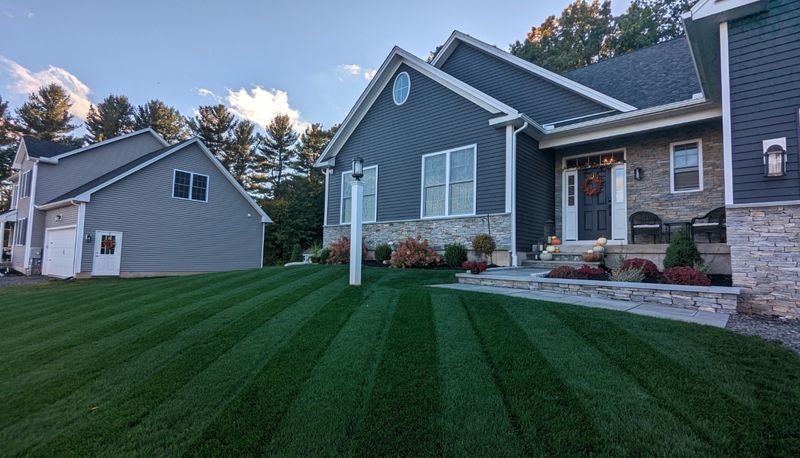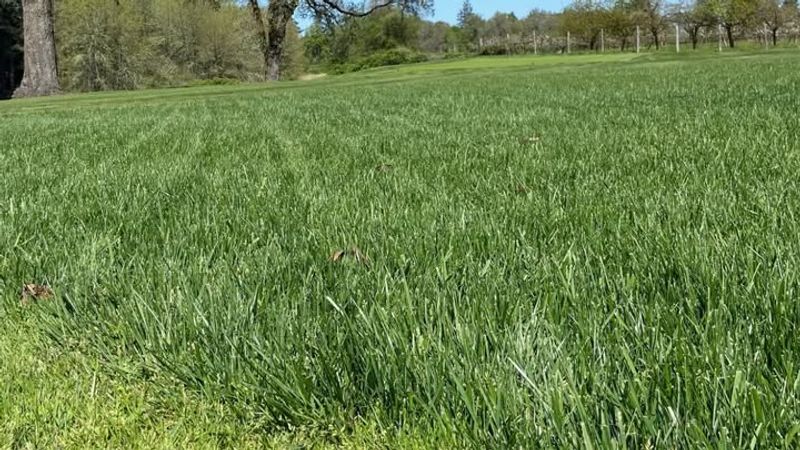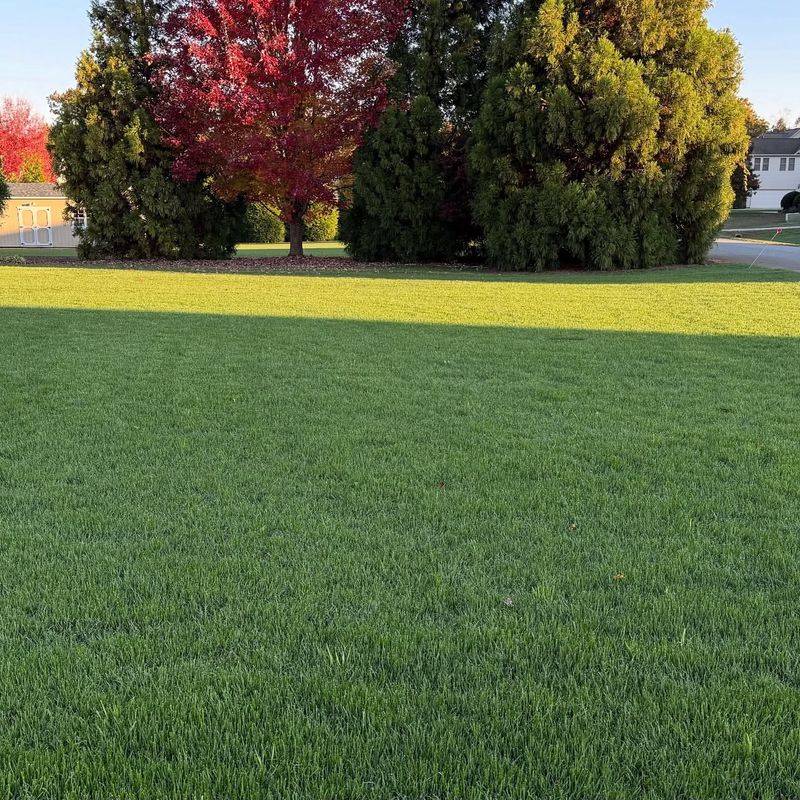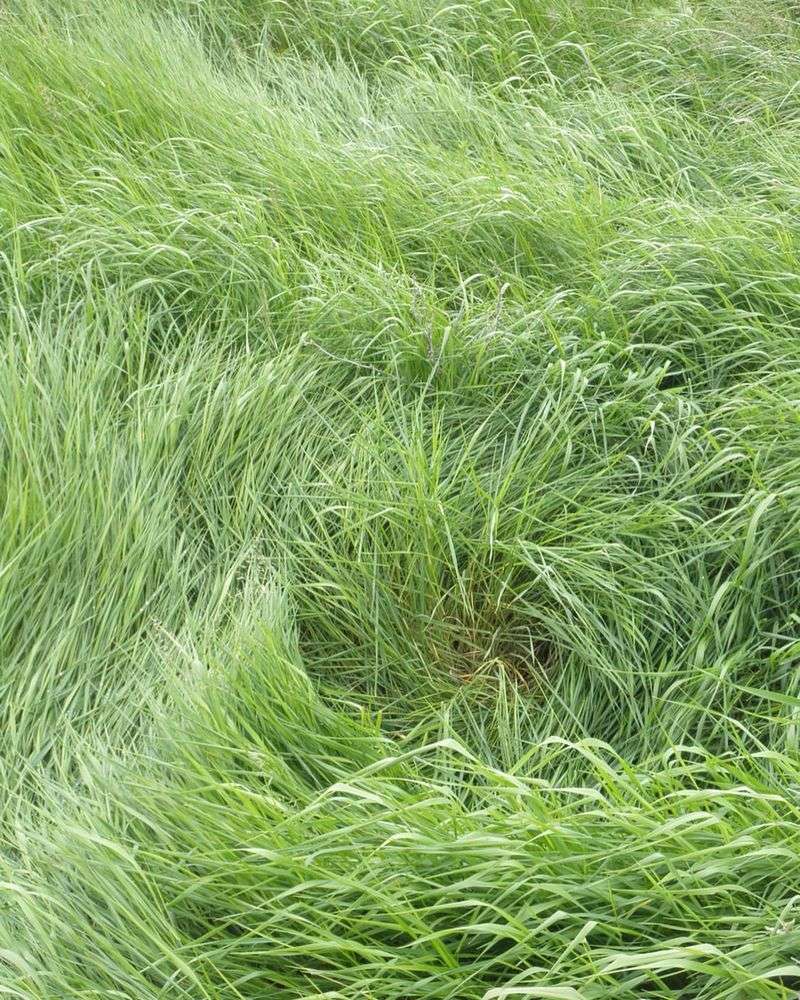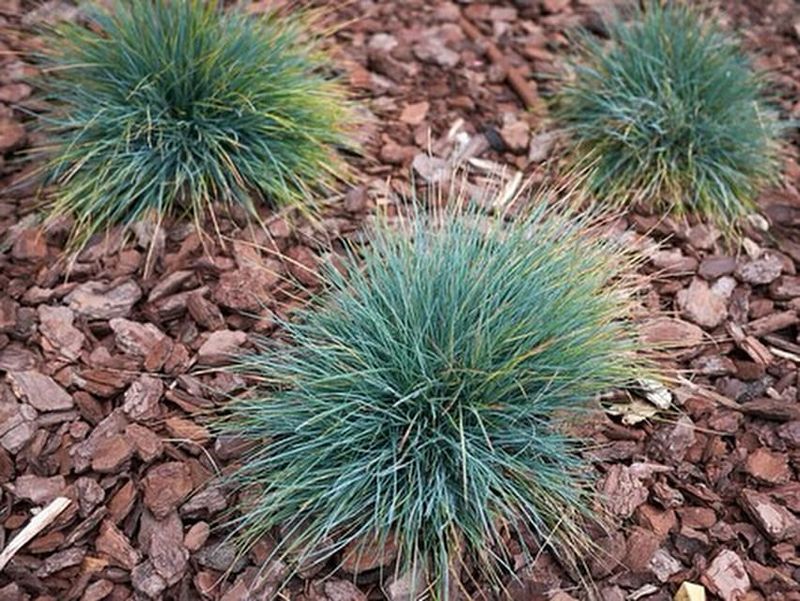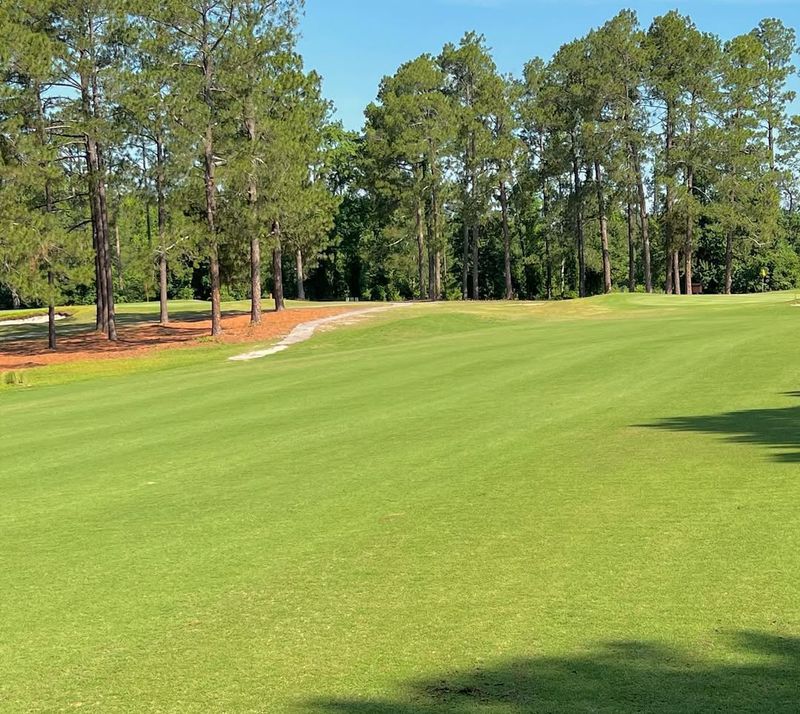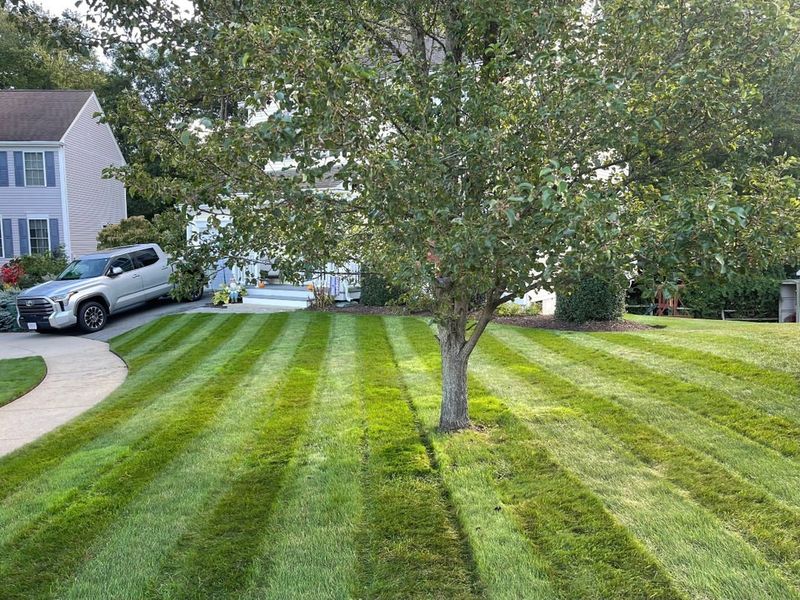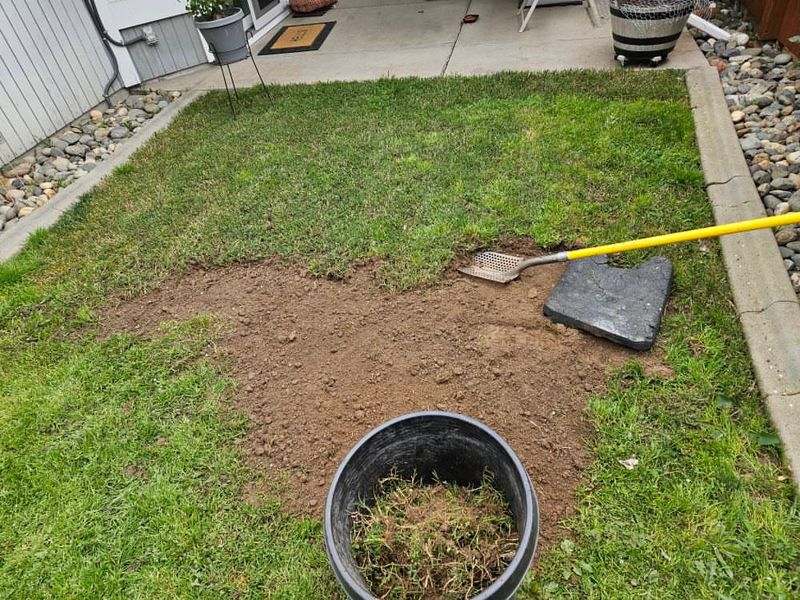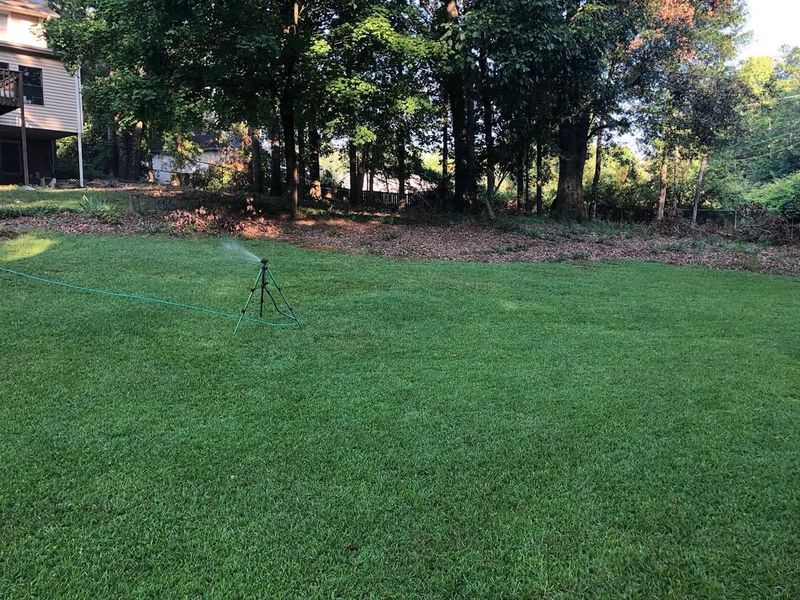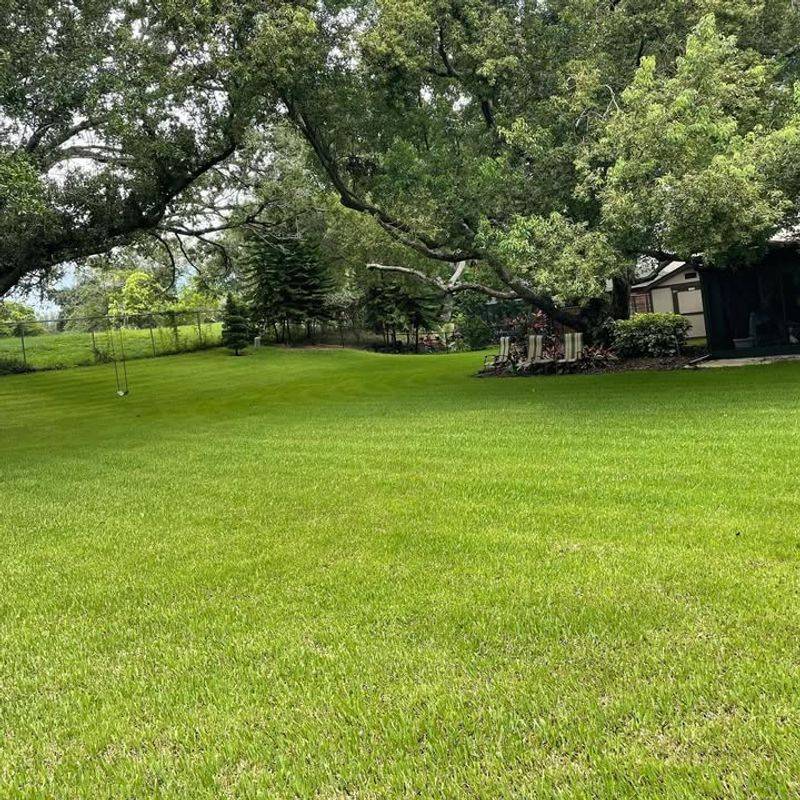Creating a lush green lawn in Pennsylvania takes more than guesswork and good intentions. With chilly winters, warm summers, and plenty of weather swings in between, choosing the right grass can make or break your yard.
Some varieties thrive like champs, stitching together a thick carpet of green, while others struggle from the moment they hit the soil. Picking winners and steering clear of the troublemakers is the secret to a lawn that stays vibrant, healthy, and easy on the eyes all season long.
1. Kentucky Bluegrass
Kentucky Bluegrass stands as the champion of cool-season lawns across Pennsylvania. Its deep green color and fine texture create that picture-perfect appearance homeowners dream about.
This grass spreads through underground stems called rhizomes, which means it repairs itself when damaged. It loves full sun but tolerates some shade, making it versatile for most yards.
Regular watering keeps it looking its best during summer heat.
2. Perennial Ryegrass
Fast germination makes perennial ryegrass a favorite for quick lawn establishment. Within just 5-10 days, you’ll see green sprouts emerging from the soil.
Its shiny, dark green blades create an attractive appearance that enhances any property. This grass handles foot traffic exceptionally well, perfect for active families with kids and pets.
Mixing it with Kentucky bluegrass creates a durable, beautiful combination that thrives in Pennsylvania’s climate.
3. Fine Fescue
Shade-loving fine fescue solves the problem of bare spots under trees where other grasses struggle. Its thin, needle-like blades give lawns an elegant, refined look.
This grass requires less water and fertilizer than most varieties, making it low-maintenance and budget-friendly. It actually prefers cooler temperatures and doesn’t mind Pennsylvania’s chilly springs and falls.
Four main types exist: creeping red, chewing, hard, and sheep fescue.
4. Tall Fescue
Deep roots reaching down 2-3 feet make tall fescue incredibly drought-tolerant once established. Pennsylvania summers can get dry, but this grass keeps its green color longer than most.
Its coarser texture doesn’t bother most homeowners, especially those prioritizing low maintenance over fine appearance. Tall fescue thrives in both sun and partial shade, adapting to various yard conditions.
Modern varieties look much better than older types.
5. Turf-Type Tall Fescue
Breeders developed turf-type tall fescue to combine durability with better looks. These newer varieties have finer blades and darker color than traditional tall fescue.
Heat tolerance and disease resistance make this grass a smart choice for Pennsylvania’s variable weather. It establishes quickly and requires less frequent watering once the roots take hold.
Many lawn professionals now recommend it as their top pick for homeowners wanting easy care.
6. Chewing Fescue
Named for its historical use in sheep pastures, chewing fescue doesn’t actually require mowing as often as other grasses. Its slow growth rate means less time pushing the lawn mower around your yard.
Bunching growth creates a dense turf that resists weeds naturally without spreading aggressively. Acidic soil doesn’t bother this grass, which matters in many Pennsylvania locations where soil pH runs low.
Minimal fertilizer needs keep maintenance simple and affordable.
7. Hard Fescue
Toughness defines hard fescue’s personality, as it survives conditions that would ruin more delicate grasses. Slopes and hills prone to drying out become manageable with this resilient variety.
Blue-green color distinguishes it from other fescues, adding visual interest to lawn blends. Once established, it rarely needs watering even during Pennsylvania’s occasional drought periods.
Athletic fields and parks increasingly use hard fescue for areas receiving less intensive maintenance and irrigation.
8. Colonial Bentgrass
Golf course quality comes to residential lawns with colonial bentgrass, though it demands more attention than average grass. Its extremely fine texture and dense growth create a luxurious carpet feel underfoot.
Frequent mowing keeps it looking pristine, as it grows vigorously during cool weather. Disease problems can arise in humid conditions, requiring preventive treatments.
Only choose this grass if you’re committed to intensive lawn care and maintenance schedules throughout the growing season.
9. Rough Bluegrass
Wet, shady spots where nothing else grows become perfect homes for rough bluegrass. Its light green color looks different from Kentucky bluegrass but fills problematic areas effectively.
Shallow roots mean this grass needs consistent moisture and struggles in dry, sunny locations. Pennsylvania yards with poor drainage or areas near downspouts benefit from including this species.
Mixing it sparingly into shaded seed blends provides coverage where other grasses would simply disappear over time.
10. Bermudagrass (AVOID)
Warm-season bermudagrass turns brown and goes dormant when Pennsylvania temperatures drop below 50 degrees. Your lawn would look brown and lifeless for more than half the year.
Aggressive spreading through runners creates maintenance headaches as it invades flower beds and gardens relentlessly. Cold winters often destroy it completely in Pennsylvania, wasting your money and effort.
Southern states love this grass, but it simply wasn’t designed for northern climates like ours.
11. Zoysiagrass (AVOID)
Slow establishment means zoysiagrass takes years to fill in completely, testing even the most patient homeowner. Pennsylvania’s short growing season doesn’t give it enough warm weather to thrive properly.
Brown dormancy lasts from October through May in most Pennsylvania locations, leaving you with an unattractive tan lawn. While it creates beautiful turf in warmer states, our climate just doesn’t provide the heat it needs.
Expensive installation costs make this poor choice even more frustrating.
12. Centipedegrass (AVOID)
Cold sensitivity makes centipedegrass completely inappropriate for Pennsylvania’s harsh winters. Temperatures below 5 degrees ruin it outright, and we regularly see colder weather than that.
Acidic soil preference seems like a match for Pennsylvania, but temperature requirements trump soil chemistry. Even if it survives one mild winter, the next cold snap will likely destroy your entire lawn.
Spending money on grass guaranteed to fail makes no sense when better options exist.
13. St. Augustine Grass (AVOID)
Tropical origins mean St. Augustine grass can’t handle Pennsylvania winters under any circumstances. Frost destroys it quickly, and our extended freezing periods would eliminate it entirely.
Thick, coarse blades might look appealing in Florida lawns, but they’ll never get that chance in northern states. Shade tolerance becomes irrelevant when the grass can’t survive your climate zone.
Lawn care professionals in Pennsylvania won’t even sell this grass because replanting every spring makes no practical or financial sense.


